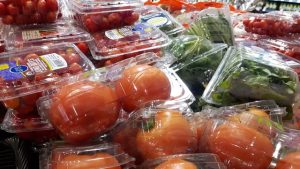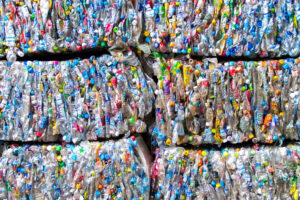- Regulatory Tools
- Circular Economy
- Government
- Government Policy
- Labelling
- Recycling
- Policy
- Strategy and Policy
- Take Action
- National
How to have a spooky and sustainable Halloween
The thrill that comes with dressing up on Halloween and collecting candy in neighbourhoods decked out with glowing jack-o’-lanterns, stringy spiderwebs, spooky gravestones and haunting music makes it one of the most exciting days of the year. But this celebration comes with a scary aftermath as more and more cheaply-made costumes, one-off decorations and candy wrappers are ending up in landfills.
But it doesn’t have to be the case. With a little thought, it’s possible to celebrate more sustainably and avoid or reduce the amount of single-use plastics. Here are a few suggestions.
Get creative with costumes
Buying second-hand costumes from thrift stores, borrowing from friends and neighbours and upcycling items in your closet are ways to reduce the amount of waste going into landfills. But not everyone wants to spend time rummaging through a second-hand store to come up with a costume. After all, the convenience of ready-made costumes is part of the appeal for many. That’s why the increasingly popular costume swaps are a great resource for families.
“A Halloween costume is going to be worn once,” says Amanda Newman, who owns Tokki, a curated shop for preloved kid’s clothes located in Toronto’s Junction neighbourhood. “The idea of going out and buying a costume for one use just doesn’t make sense, especially now. I think everyone is trying to make that shift to buying second-hand or not using single-use plastics, it’s really on the top of our minds right now, and every little thing really counts. The costume swap is fun and you’re doing a good thing for the environment.”
Newman has hosted a Halloween Costume Swap for the past three years. She started after she realized that kids’ costumes are expensive and are often only worn once. The idea of a swap fit right into the ethos of her shop — providing sustainable fashion choices and offering a meeting place for the community, says Newman.
“People were really happy to just get a costume and donate to a great cause,” says Newman. All proceeds from this season’s costume sales are going to the Native Women’s Resource Centre.
This year’s swap took place on Oct. 5 and the racks were filled with the usual costumes — princess, firefighter, astronaut and cute animals like sharks, butterflies, bumblebees and lions, for kids from infants to about 10 years old. The event continues until Halloween. People can either swap a costume or buy a costume for a minimum $5 donation.
Look for costume swaps on Facebook neighbourhood groups, at local schools and community centres.
Karen Ziegler, who started a costume swap two years ago in Toronto’s east end says the swaps are a great way to bring the community together. She decided to organize a swap when several parents in one of her Facebook groups showed interest.
“I think everyone is at a point where they are feeling anxious and want to feel like they are doing something. It may feel like a small thing, but it’s something,” says Toronto mom Ziegler. “This year my son Jake will dress up in a second-hand Spider-Man costume and my partner and I are going as Thomas the (Tank Engine), made out of painted cardboard boxes.”
The Toronto Public Library’s environmentalist in residence Sophi Robertson organized the costume swap at Richview Library in Etobicoke, which takes place Oct. 21 from 5 to 8 p.m., as well as a costume upcycle event on Oct. 26 from 12 to 2 p.m. as part of the library’s Our Fragile Planet program series that provides environmental education and awareness programs.
“It’s a way of reducing waste by not going to purchase something new and keeping those costumes in circulation and providing easy access to them,” she says.
Ditch the plastic — make your own decorations
Halloween has become one of the biggest decorating holidays of the year. It’s fun to get creative rather than rush off to a dollar store. Search your house or visit a thrift store for items to reuse and recycle. And then of course there are pumpkins, which are not just decorations, they are edible too.
Easy home projects include making a front-yard cemetery by turning cardboard boxes into tombstones and scrap pieces of wood into crosses; painting paper or cardboard black and cutting them into bat shapes to suspend from the porch or tree branches or tape to a window. The pumpkin is the classic plastic-free Halloween decor item. Once it’s carved and used as a decoration, why not jump on the pumpkin-spice food trend? Roast the seeds and cut the flesh up to make soups, pies, loaves and cookies. Compost what you can’t eat.
Hand out greener treats and recycle candy wrappers
Halloween is all about the candy. But after the trick-or-treating has ended, the environmental impact of all those plastic wrappers — everything from mini chocolate bars to chips and candies going in the garbage can be huge.



